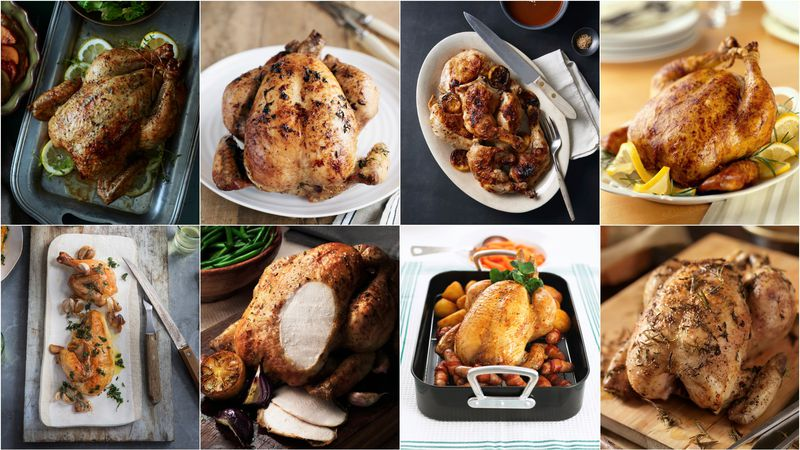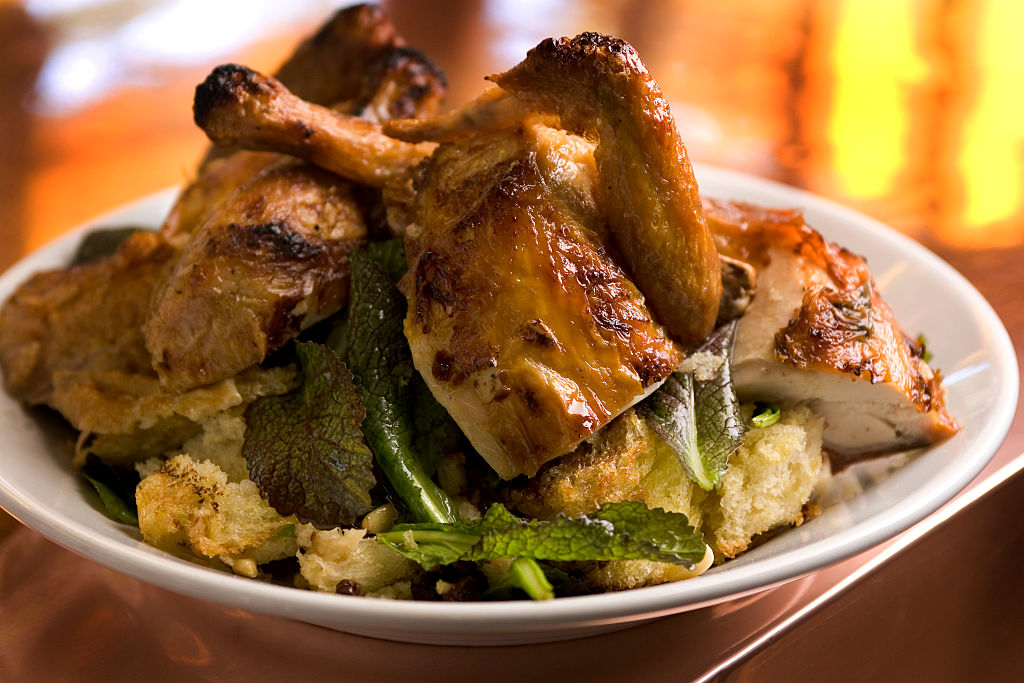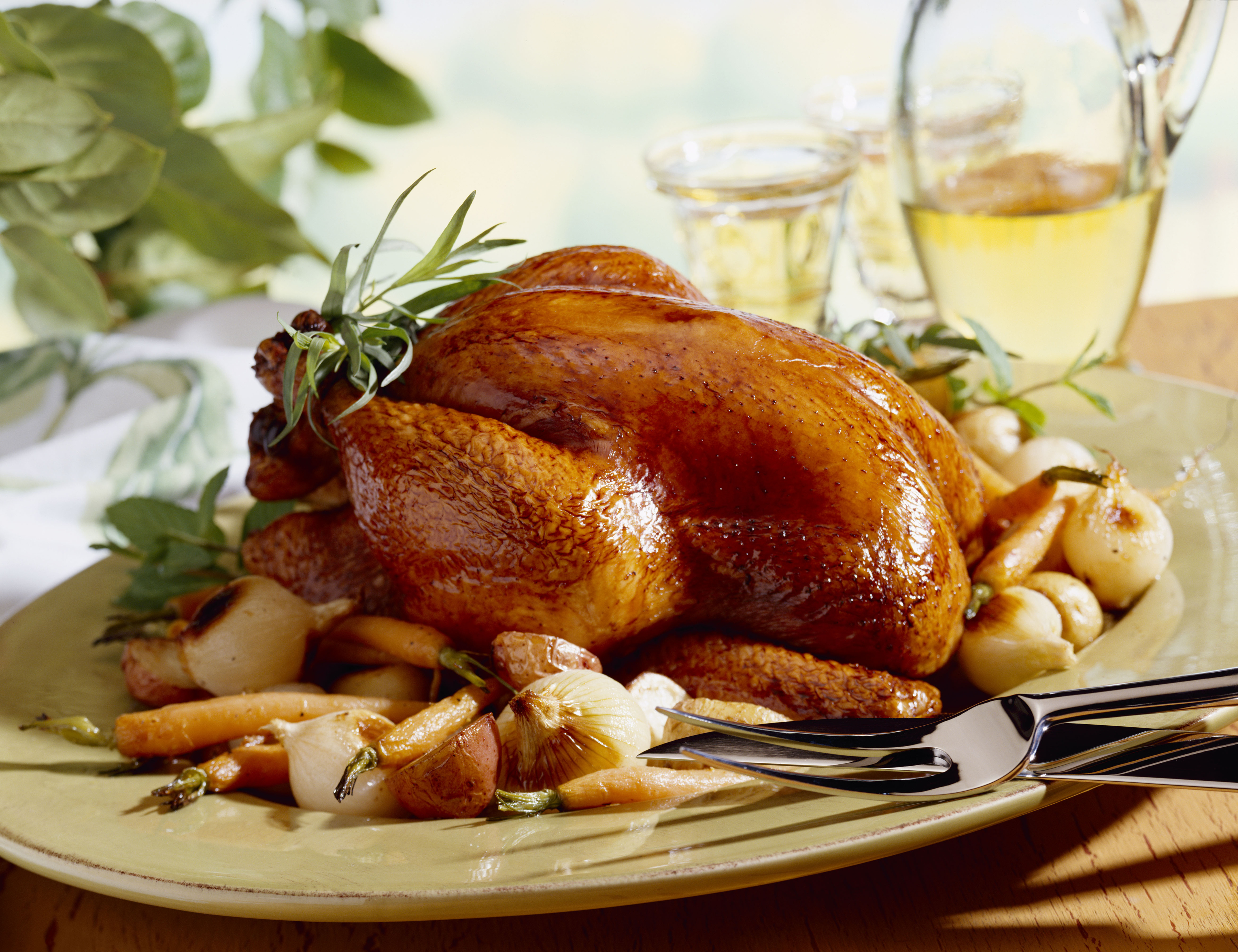Perfect Roast Chicken Requires Salt And Time (Or A Whole Lot Of Butter)
We may receive a commission on purchases made from links.
We can't talk roast chicken without first tipping our hats to Judy Rodgers.
Rodgers, the late chef/owner of Zuni Cafe in San Francisco, was the person responsible for changing our culinary perceptions about roast chicken, from humble home-cooked dish to fine-dining menu item. (Zuni Cafe's rendition was the most succulent and crisp-skinned chicken we've ever tasted.)

Rodgers' innovative method for dry-brining a chicken has since become de rigueur for chefs everywhere, and it's a technique you absolutely should learn and employ. There are three keys to her roast chicken: First is liberally salting the chicken and letting it sit in the fridge for at least two days, preferably three. The salt dissolves and absorbs into the meat, tenderizing it in the process while drying out the skin. Second: Stuffing herbs between the breast meat and skin. This deepens the white meat's flavors, but separating skin from meat also has the benefit of crisping the exterior during the roast. The third technique is to flip the chicken several times while it's roasting, which helps cook the bird evenly and, once again, maximizes skin crispiness. This recipe from of Zuni Cafe's chicken from The New York Times should be your browser's default home page.
Chefs we talked to for this week's column frequently name-checked Rodgers for inspiration. They shared some of their favorite touches for roasting chicken.
Ryan Pera, chef/owner of Revival Market, Coltivare and Eight Row Flint in Houston
Salt rub the chicken generously several hours beforehand. This will season the bird thoroughly. Don't be timid with the seasonings either, whether fresh herbs or just salt and pepper—aggressive seasonings can make a chicken taste great.
Roast potatoes underneath the bird. Yes, it's classic, but there is a reason it's classic, because they produce the best potatoes ever. If you want to change up from potatoes, butternut squash, or a big thick slice of rustic bread (right under the bird with no grate) would be great too (plus the bread crisps up).
Use an out-of-oven thermal probe. Thermometers are your friend, and overcooked chicken is the worst. Breast meat should be to 155 degrees, legs to 165. Spatchcocking the bird is another great way to speed up the cook time and get a nice crispy skin.
Frankie Cox, executive chef of Two Hands Restaurant & Bar in New York City
Brining the bird makes all the difference. I generally brine for around six hours. I then dry the bird out in the refrigerator for a few hours for the ultimate crispy skin. Season the bird with your herbs and spices of choice and a generous helping of kosher salt. Cheat's guide to a golden chicken: drop some turmeric in your seasoning. Guaranteed golden skin. Stuff the cavity with your favorite woody herbs and citrus. Sit the bird on your standard vegetables. Cook on 300 degrees Fahrenheit for the first half hour then crank up to 375 degrees for about 15 minutes to crisp up the skin. The chicken is cooked when the juices run clear. Rest for about 10 minutes. Resting is crucial for an all-around succulent bird.
Nick Curtola, executive chef of The Four Horsemen in Brooklyn
For chicken, we like to dry out the skin for a couple of days. That will help it get nice and crispy. It just takes a little planning and forethought. Basically just put in on a sheet tray with a rack for a few days uncovered in your fridge. Once the skin has dried and firmed up a bit, pull it out a couple of hours before cooking. Then rub it with olive oil and season it generously with salt and pepper. Roast in a relatively high oven, maybe 375-400 degrees. Breast meat is nice when it's a little pink, maybe 155 degrees internal temp. Legs are nice when they're cooked to 165-170 degrees. Basting the chicken in its juices with a little brush is nice, too.
Alex Talbot and Aki Kamozawa, authors of Ideas in Food
We always roast our chicken on a nest of vegetables—from broccoli to carrots to blanched potatoes and onions. That way, the skin stays crisp, while the veg steams and roasts underneath.
Anthony Genovese, chef de cuisine at The Wild Son in New York City
A good technique to yield a juicy and flavorful chicken is to make a brine. I like to use a little buttermilk, water, salt, herbs and citrus. Allow the chicken to soak in for a couple hours, inject the breasts and thighs if it's a larger bird. Then allow the chicken to air dry overnight in the refrigerator on a rack. This will help you get a perfectly juicy, well-seasoned bird, while yielding a beautifully crispy golden skin.
Neal Fraser, chef of Fritzi and Redbird in Los Angeles
At my restaurants, brine the chicken overnight in aromatics (brown sugar, salt, thyme, rosemary, bay leaf) for 24 hours. Then I pat the skin until dry, and salt the skin. I like to roast the chicken hard and fast at 400 degrees in the oven for 45 minutes depending on the size, and rest the chicken for 10 minutes before carving. For at-home hacks, where most people including myself likely won't have time to brine the chicken overnight, my quick fix is to rub the chicken with extra virgin olive oil and salt inside and outside of the chicken's skin. For extra flavor, put a whole head of garlic inside of the cavity before roasting. If you're looking to get a little crazy, slide butter under the skin as well as the olive oil and salt.
Paul Fehribach, chef/owner of Big Jones in Chicago
Before opening my restaurant, I would roast chicken at least once a week at home because it's my favorite thing. I always make an herb butter to rub the chicken with. Minced garlic, thyme, chives, sage, just mix it up with unsalted butter and rub that over the chicken. I like the butter solids to coalesce on the skin and help it brown. I want that skin to be brown and soft and crisp. We want this chicken to cook as quickly as possible, so I don't like to truss it; it can cause the thighs to take longer to cook. I will then stuff the cavity with bay leaf, thyme, and sage.
I'll put it on a raised rack in a braising pan so you can get that hot air circulating. I'll start the oven at about 425 degrees and run it for 15-20 minutes, then I'll turn it down. By that time, you should get some browning on the skin. And as the butter accumulate on that braising pan, you'll need to continually baste the chicken. You'll get this rough crusty skin, rather than this smooth golden brown, and it's a texture I really like. Towards the end, I sprinkle with flake salt and black pepper.
In the winter I'll roast the chicken on a bed of root vegetables, like sweet potatoes or beets. In the summer I'll use potatoes and corn cobs.
Then I'll take the juices from the roasting pan, whisk in a good wine vinegar, and make a warm, buttery chicken vinaigrette.
Kevin Pang, The Takeout editor-in-chief
My second favorite way of roasting a chicken (besides the Zuni Cafe method) comes from chef, author, and winner of most-British-name-ever: Hugh Fearnley-Whittingstall. His River Cottage Meat Book remains top three in my most-used cookbooks ever, and his technique for roast chicken is indulgent and utterly delicious—in fact, I cooked this on an early date for the woman who'd become my wife. I guess it worked.
It's a lot like Paul Fehribach's technique. You take an entire stick of butter, let it soften to room temperature, mix with chopped herbs, then shellac the exterior of the chicken until it's coated entirely. Think of it as giving the chicken a butter facial. Here's the full recipe, adapted from Hugh Fearnley-Whittingstall, with variations I originally published in the Chicago Tribune:
One 3-4 pound chicken (The smaller the bird, the better.)One stick of butter (Leave it out in room temperature for an hour. I like European-style butter, like Kerrygold, which has a higher butterfat content.)Fresh herbs, such as sage, thyme, rosemary, garlicSalt and pepper1/2 cup dry white wineTwo lemons
1. Pat chicken dry and set aside. Take the room-temperature butter, the coarsely-chopped herbs and garlic, salt and pepper, and throw it in a bowl. Here's where you'll get your hands messy. Mix everything together until it turns into an amalgam of herby-buttery mess. Now, smear it all over the chicken, inside and out. I even like taking some of that butter mixture and stuffing it between the skin and flesh. Cut up one of the lemons and stuff it inside the chicken cavity.
2. Take the butter-smeared bird and place into oven, pre-heated at 420 degrees. Roast for about 20 minutes. Open the oven, baste the chicken, and pour the half cup of white wine into the roasting pan. Turn oven down to 375 degrees and roast for another 22-30 minutes, depending on the size of the bird. Turn the oven off, opening the door slightly, and let it finish cooking for another 15 minutes. To test its doneness, pierce where the thigh and breast meet; the juices should run clear.
3. Cut it up into eight pieces. Put it back on the roasting pan, and bring the whole tray to your dinner table. Cut up a few lemon wedges. Get some crusty bread, and dip it into the buttery, chickeny pan juices. I can't imagine anything worse for your heart, but I also can't imagine anything more delicious.


